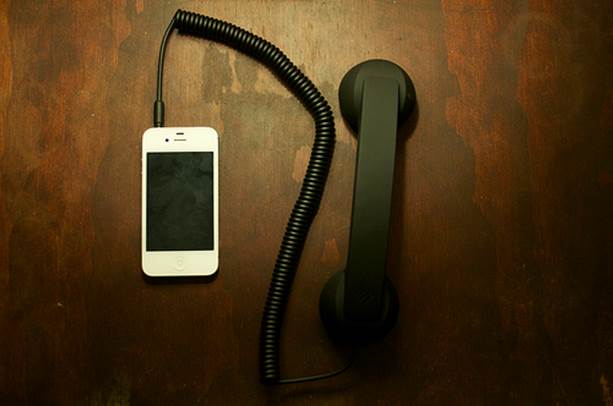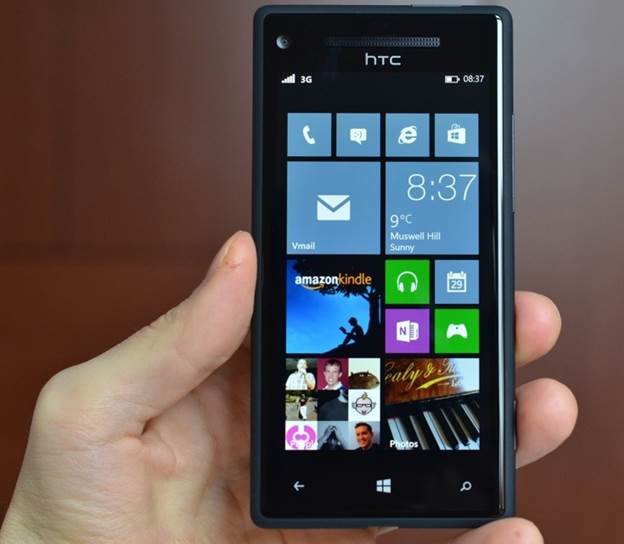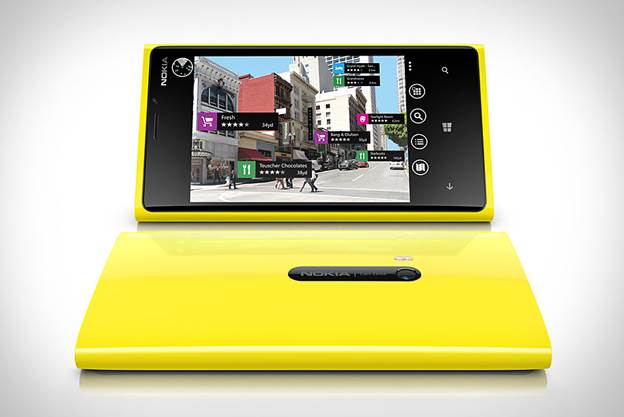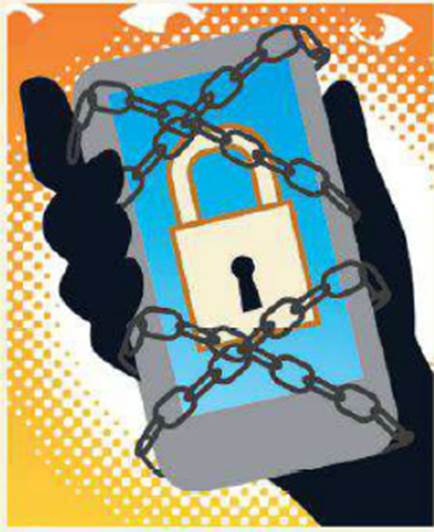It might seem unnecessary to replace a
working smart phone at the end of the customary 24-month contract period for
most plans. But two factors make it smart to consider spending $200 or so to
get a new phone when you’re eligible to do so:

When
to get a new smart phone?
You’ll
pay for a new one, anyway.
Unless you opt to switch to a prepaid plan
once your contract obligations are fulfilled your monthly bill will probably
continue at the same cost as before. That bill will include the amount the
carrier sets aside to repay itself the difference (usually at least $300)
between what you paid for the smart phone and what the carrier paid the
manufacturer for it.
In other words, after your contract is up,
you’ll essentially be paying toward a new phone whether you get one or not. So
why not get something for your money?
You
old phone will show its age.
Operating systems and apps are designed and
updated for the newest smart phones, with their faster processors, expanded
memory, larger and sharper displays, improved cameras, and more. Accepting
over-the-air updates to your operating system and apps when prompted to do so
helps stave off obsolescence, and deleting apps you no longer use helps. But
within a few years, you phone could struggle to muster the processing power,
memory, or features it needs to make the most of new apps or an upgraded
operating system – if it can accept them at all.

Within
a few years, you phone could struggle to muster the processing power, memory,
or features it needs to make the most of new apps or an upgraded operating
system – if it can accept them at all.
Did you know?
Sell, trade, or recycle
You can sell your old phone privately on
Craigslist or eBay or to a company such as Gazelle, which in November was
offering $160 for a 16GB iPhone 4S for example. Some phone manufacturers have
trade-in programs. You could donate it to an organization such as Recycling for
Charities or give it to someone. (Make sure you delete personal data). Or
simply keep the phone in case you lose or damage a new one and don’t want to
replace it until your contract expires and you’re eligible for a new discounted
phone.
Android phone, iPhone, or Windows Phone? How they compare
You now have three flavors of smart phone
to choose from: android phones, iPhones, and Windows Phones. (BlackBerry is
still around but is geared mostly toward business use, so we won’t cover it
here.). Here’s how they compare, with examples of available phones:
Android
OS

·
The phones
If you want a wide choice of phones, you’ve
come to the right place. There are half a dozen brands offering scads of phones
that run on the Android operating system. Displays are the biggest around as
large as 5.5 inches, and this platform is the only one other than BlackBerry
that has phones with a physical keyboard. Android phones stand out for
innovative features such as Wi-Fi Direct, facial recognition, NFC for wireless
sharing and mobile payments.
·
Apps and more
Google Play carries a wide selection of
music apps, e-books, and other content from phone carriers, phone
manufacturers, and providers such as Amazon.com. Payments through your Google
account are easy, but sometimes you have to pay the carrier or app provider.
·
The interface.
The Android OS is as customizable as they
come, thanks to a wide variety of widgets and other built-in tools for tweaking
phone controls, as well as its look and feel. You can organize apps into
folders, and you don’t’ have to clutter your home screens with every app you
own. Little-used apps can remain in a separate app drawer until you need them.
But the interface and features can vary significantly from phone to phone, and
OS updates can radically change features.

Samsung
Galaxy S III Price range $200 to $330 with two-year contract, including
rebates. A brilliant 4.8-inch display, clever HD cameras, and ingenious options
for sharing make the Galaxy S III ideal for social networkers.
Apple
iOS
·
The phones
There’s only one product line to choose
from, and only one new model is introduced each year. These models complement
their sleek, trend-setting designs and intuitively simple operation with
top-notch displays, camera, and music players. iPhone 5, the first iPhone with
a 4-inch display and support for fast 4G LTE data networks, is the best one
yet. But these LTE phones can’t simultaneously support a phone call and an
Internet-based connection over the cellular network.
·
Apps and more
If it’s apps you want, Apple is the
hands-down winner. The selection of music, video, games, and apps from iTunes
and the App Store is simply unrivaled. And it’s easy and safe to buy via iTunes
account. You’ll also find accessories galore- cases, compatible devices, and
more.
·
The interface
The simple iOS interface is ultra-easy to
master. Consistency is another plus: iOS, which hasn’t changed much in years,
is the same from carrier to carrier and almost identical to that of the iPad.
You can create folders to organize apps, but you can customize the interface
only minimally and the screen can become cluttered.
 Apple iPhone 5 price range $200 to $400 with two-year contract,
including rebates. The innovative iPhone 5 is a major step up from earlier
models, including the recommended 4S. it retains its simple, familiar interface
while boosting the IQ of Siri, the savvy voice assistant and making the
top-notch iPhone camera even better.
Apple iPhone 5 price range $200 to $400 with two-year contract,
including rebates. The innovative iPhone 5 is a major step up from earlier
models, including the recommended 4S. it retains its simple, familiar interface
while boosting the IQ of Siri, the savvy voice assistant and making the
top-notch iPhone camera even better.
Windows
Phone

·
The phones
Windows Phone is still playing catch-up,
and there’s only a small selection of phones from HTC, Nokia, and Samsung. Many
of them have screens 4 inches or larger, and all let you launch the camera from
a locked screen, even when it’s protected by a personal identification number.
The newest models support NFC technology for wireless sharing and mobile
payments.
·
Apps and more
You’ll find a fairly small selection of
music, video, apps, games (including Xbox), and other content form Microsoft,
phone carriers, and phone manufacturers, nothing yet to compare with Android or
Apple. You can pay via a Microsoft account in many cases, though sometimes you
have pay the carrier or app provider directly
·
The interface
Windows Phone is simple yet flexible,
residing on two scrollable main panels. One panel houses apps, and the other
has resizable Live Tiles that can display updates from social-network feeds and
other sources. Large, colorful fonts provide a clear, distinctive presentation
of e-mail, calendars, and other phone content. It has a similar look and feel
to Window 8 computers and tablets. But you can’t create folders to organize
apps, and panels can get unmanageably long.

Nokia
Lumia 920 price $100 from AT&T with a two-year contract. It has unique
advanced features such as wireless charging based on magnetic induction. One
cool feature: you can erase people from photos, say, when shooting a landscape
Protect the data on your phone

In a recent survey, half of our readers who
own a cell phone told us they use their phones in ways that put their
passwords, account numbers, and other sensitive information at risk. Yet one
out of three of them didn’t take any steps to protect themselves. If they were
to lose their phone, strangers could pore through their data, send malicious
texts or email that seem to be from them, and order merchandise from accounts
they’ve set up. Here’s how to minimize your risk:
Lock
your phone
Consider using a personal identification
number or password on your phone so that others won’t be able to browse your
life history or embark on an online spending spree. That tactic requires you to
balance security and convenience, because you’ll have to enter a code every
time your phone screen locks. To minimize the hassle, you could set a fairly
long interval before your phone times out, say, 30 minutes.
Install an app that can locate a phone and
remotely lock it or even erase its data. Options include Find My iPhone (free
on iTunes) and Lookout for Android – based phones (fee at Google Play). The
Lookout app can back up your data. Other free backup services are the iCloud
for iPhones and, for Android phones, Google Cloud Storage, Verizon’s Backup
Assistant, and AT&T’s Mobile Backup. For Windows Phone devices use
SkyDrive.
Keep
apps in check
Many consumers realize there are at least
some inherent risks in downloading apps to a phone but don’t understand the
extent to which they compromise privacy, according to a nationally
representative survey conducted recently by the Consumer reports National
Research Center.
Eighty- one percent of respondents
recognized that apps- even from reputable, well-known companies –can access
personal information stored on a phone and share it with others. But almost 60
percent of those surveyed believed sharing data was illegal unless the phone’s
owner explicitly agreed to that. And 53 percent thought it was illegal for an
app maker with a privacy policy to share the user’s personal information with
other companies. In fact, there are no legal protections against sharing this
information. But three-quarters of survey respondents did realize that app
markets, including Apples App Store and Google Play, don’t’ prevent app
developers from sharing their information.
With smart-phone apps from any source:
·
See what permissions you’ve granted installed
apps (under setting/Apps for Android phones and Settings/Privacy for iPhones).
Uninstall any that are too nosy.
·
Before downloading an app, scrutinize the
permissions it request. Reject any that want to do something suspicious, such
as tracking your location if that seems unnecessary.
Don’t get personal
When going online, be careful about
disclosing personal information. Before selling or discarding a phone, wipe out
your data by resetting the phone to the factory default. And remove SIM cards
and memory cards, if applicable.